Published by by Beginner Guitar HQ Staff
- How to Play Bass Guitar like Paul McCartney
- Guide Breakdown
- Playing Style: Goals
- With the Beatles
- Wings & Solo Artist
- Bass Guitar Techniques
- Playing With a Pick
- Blues Vocabulary
- Uses for Blues
- Early Beatles: Simple, Basic Chord Tones
- Later Beatles: Chromaticism
- Using Chromaticism in Your Playing
- Gear
- Hofner Violin Bass
- Rickenbacker Bass (4001/4003)
- Amps & Accessories
- Conclusion
- Download McCartney’s and The Beatles’ sheet music books from our Library, or play along with them and the best rock bands.
- Read the full article published by Beginner Guitar HQ here.
How to Play Bass Guitar like Paul McCartney
Paul McCartney might just be the most famous bass player of all time. Beginning with his career in the Beatles and continuing through his careers with Wings and as a solo artist, McCartney has revolutionized the role of the bass in popular music, and changed the image of the bass guitar overall. Bassists today, in all genres, owe a lot of their presence and style to Sir Paul.
Over the course of his storied lifetime, Paul McCartney has shifted between a wide variety of different bass styles. His playing has evolved consistently, and at times it’s taken left turns into new genres entirely.
That evolution has helped make Paul one of the most enjoyable bass players to listen to in the history of rock and roll. While they might be complex, dense, or even difficult to wrap your head around, McCartney’s bass parts are almost always interesting.
He’s demonstrated all of the different ways how the bass guitar can drive a song — from holding down the rhythm with rock-solid ostinato grooves to flying over the drums and providing an iconic hook that sticks in the ears of all of the listeners.

Guide Breakdown
Browse in the Library:
| Artist or Composer / Score name | Cover | List of Contents |
|---|---|---|
| A dozen A Day Book 1 Technical exercises for the piano |
 |
A dozen A Day Book 1 Technical exercises for the piano |
| A dozen A Day Book 2 Technical exercises for the piano |
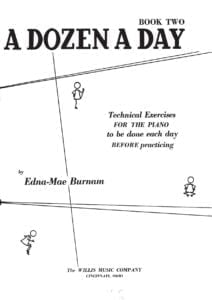 |
|
| A dozen A Day Book 3 Technical exercises for the piano |
 |
|
| A dozen A Day Book 4 Technical exercises for the piano |
 |
|
| A dozen A Day Mini Book Technical exercises for the piano |
 |
|
| A dozen Day Preparatory Book Technical exercises for the piano |
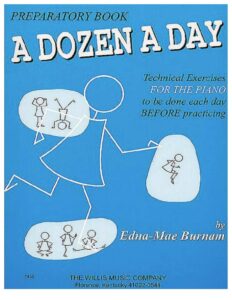 |
|
| A Farewell To Arms Love Theme From A Farewell To Arms film by Mario Nascimbene Francis Webster 1957 |
 |
|
| A Felicidade (Antonio Carlos Jobim) | ||
| A Festival Gathering Of Carols (Musescore File).mscz | ||
| A Fine Frenzy – Almost Lover |
 |
|
| A Fistful of Dollars (Ennio Morricone) | ||
| A Generative Theory Of Tonal Music by Fred Lerdahl and Ray Jackendoff (Book) |
 |
|
| A Guide To Guitar Chords by Curt Sheller |
 |
A Guide To Guitar Chords by Curt Sheller |
| A Guide To Musical Analysis by Nicholas Cook (Book) |
 |
|
| A Handbook Of Piano Playing (By Eric Hope) (1962) |
 |
|
| A Heart Full Of Love (Musescore File).mscz | ||
| A love suicide (Yutaka Minobe) | ||
| A Love Supreme (by Ashley Kahn) The story of john Coltrane’s signature album (Book) |
 |
|
| A Media Luz (Edgardo Donato) | ||
| A Modern Approach To Jazz Rock And Fusion For Guitar with Tablature |
 |
A Modern Approach To Jazz Rock And Fusion For Guitar |
| A Modern Method For Guitar (Berklee) 1 by William Leavitt |
 |
A Modern Method Berklee 1 |
| A Modern Method For Guitar (Berklee) 2 by William Leavitt |
 |
A Modern Method For Guitar (Berklee) 2 |
| A Modern Method For Guitar (Berklee) 3 by William Leavitt |
 |
A Modern Method For Guitar (Berklee) 3 |
| A MOZART REINCARNATED (Ennio Morricone) |
 |
|
| A Mozart Reincarnated by Ennio Morricone (Musescore File).mscz | ||
| A New Approach To Ear Training by Leo Kraft (BOOK) |
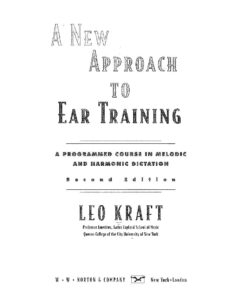 |
|
| A New Approach To Piano Technique (By Ruth A. Dickerson) (1962) |
 |
A new approach to piano technique |
| A Night In Tunisia – Dizzy Gillespie.mscz | ||
| A Pedal Method For The Piano (By Albert F Venino) (1893) |
 |
|
| A Popular Account Of Ancient Musical Instruments And Their Development by William Lynd (Book 1897) |
 |
|
| A Rockin’ Christmas Piano Vocal Guitar |
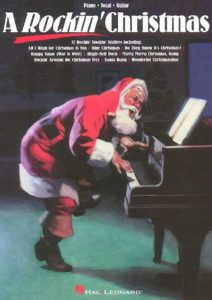 |
20 songs to sing on a rockin’ Christmas Eve Includes: All I Want for Christmas Is You * Grandma Got Run Over by a Reindeer * Happy Xmas (War Is Over) * Jingle-Bell Rock * Merry Merry Christmas Baby * Rockin’ Around the Christmas Tree * Santa Baby & moreRockin Christmas |
| A Single Man – George’s Waltz (Shigeru Umebayashi) | ||
| A Single Man – Stillness of the Mind (Abel Korzeniowski) | ||
| A Smooth Jazz Christmas – Mellow Seasonal Favorites for Piano arr. Roger House |
 |
A Smooth Jazz Christmas – Mellow Seasonal Favorites for Piano arr. Roger House |
| A Song For You – Leon Russell Ray Charles (Musescore File).mscz | ||
| A Star Is Born – Always Remember Us This Way Lady Gaga |
 |
|
| A Star Is Born – Shallow Lady Lady Gaga |
 |
|
| A Tale Of Two Sisters Ost – Epilogue Piano Solo |
 |
|
| A Thousand Years – Twilight OST (Christina Perri) | ||
| A Time For Love – Johnny Mandel |
 |
|
| A Time For Us – Guitar TABlature |
 |
|
| A Time For Us (Love Theme from Romeo and Juliet) Nino Rota |
 |
|
| A Time For Us (Romeo and Juliet OST) Nino Rota | ||
| A Touch Of Jazz 14 well-known hymns, gospel songs and contemporary praise songs by Wolaver Bill |
 |
A Touch Of Jazz 14 well-known hymns, gospel songs and contemporary praise songs by Wolaver Bill |
| A Tribute To Ella Fitzgerald Piano Vocal Guitar |
 |
A tribute to ELLA FITZGERALD |
| A Walk To Remember – Only Hope | ||
| A whiter shade of pale – Procul Harum | A whiter shade of pale – Procul Harum | |
| AaRON U-turn Lili Piano |
 |
|
| Ab Ovo – Joep Beving (Musescore File).mscz | ||
| Abba – Abba Gold – Greatest Hits |
 |
ABBA Gold Geatest Hits booksong sheet music |
| Abba – Chiquitita | ||
| Abba – Dancing Queen | ||
| Abba – Fernando | ||
| Abba – I Have A Dream | ||
| Abba – Like An Angel Passing Through My Room | ||
| Abba – Mamma Mia | ||
| Abba – Slipping Through My Fingers | ||
| Abba – Thank You For The Music | Abba-Thank-You-For-The-Music 1st page | |
| ABBA – Thank You For The Music (Piano Vocal Guitar) | ABBA – Thank You For The Music (Piano Vocal Guitar) | |
| ABBA – Thank You For the Music (Piano vocal Guitar) (Musescore File).mscz | ||
| Abba – Thank You For The Music Piano & vocal | Abba – Thank You For The Music-abba-satb | |
| Abba – The Winner Takes It All | ||
| ABBA Dancing Queen Easy Piano Solo |
 |
|
| ABBA Fernando (Piano Solo arr.) |
 |
|
| ABBA Fernando (Piano Solo arr.).mscz | ||
| ABBA Greatest Hits |
 |
ABBA GREATEST HITS SHEET MUSIC BOOK |
| ABBA I Have A Dream |
 |
|
| Abba The Very Best Vol 1 Easy Piano Hans Gunter Heumann Pop Classics For Piano |
 |
Abba The Very Best Vol 1 Easy Piano |
| Abba The Very Best Vol 2 Easy Piano Hans Gunter Heumann Pop Classics For Piano |
 |
Abba The Very Best Vol 2 Easy Piano |
| Abbey Lincoln Songbook |
 |
Abbey Lincoln Songbook |
| Abbey Lincoln Songbook Piano Vocal Guitar Chords |
 |
Abbey Lincoln Songbook Piano Vocal Guitar Chords |
| Abdullah Ibrahim – The Piano World Of |
 |
Abdullah Ibrahim, The Piano World Of |
| Abdullah Ibrahim The African Piano Of Abdullah Ibrahim Vol 1 |
 |
Abdullah Ibrahim The African Piano Of Abdullah Ibrahim Vol 1 |
| Abdullah Ibrahim The Wedding (piano solo transcription sheet music, partition) |
 |
|
| Abel Korzeniowski – Death Is My Heir (from Romeo and Juliet) |
 |
|
| ABRSM Jazz Piano Pieces Grade 1 to 5 |
 |
ABRSM Jazz Piano Pieces Grade 1 to 5 ABRSM Jazz Piano Pieces Grade 5ABRSM Jazz Piano Pieces Grade 5 |
| ABRSM Piano Exam Pieces Grade 1 (2016) |
 |
ABRSM Piano Exam Pieces Grade 1 (2016) |
| ABRSM Piano Scales, Arpeggios Grade 8 |
 |
|
| ABRSM Piano Scales, Arpeggios and broken chords Grade 1 |
 |
|
| ABRSM Piano Scales, Arpeggios and broken chords Grade 4 |
 |
ABRSM Piano Scales, Arpeggios and broken chords Grade 4 |
| ABRSM Piano Scales, Grade 2 A Guide for Students and Teachers | ABRSM Piano Scales, Grade 2 A Guide for Students and Teachers | |
| ABRSM – Time pieces for guitar vol. 1 |
 |
|
| ABRSM – Time pieces for guitar vol. 2 |
 |
|
| ABRSM 2017 18 Piano Exam Pieces Grade 1 |
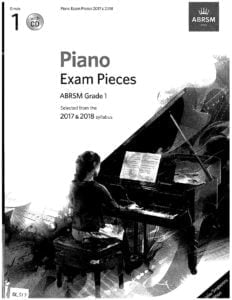 |
ABRSM 2017 18 Piano Exam Pieces Grade 1 |
| ABRSM 2017 18 Piano Exam Pieces Grade 2 |
 |
ABRSM 2017 18 Piano Exam Pieces Grade 2 |
| ABRSM 2017 18 Piano Exam Pieces Grade 3 |
 |
|
| ABRSM 2017 18 Piano Exam Pieces Grade 4 |
 |
|
| ABRSM 2017 18 Piano Exam Pieces Grade 5 |
 |
|
| ABRSM 2017 18 Piano Exam Pieces Grade 6 |
 |
|
| ABRSM 2017 18 Piano Exam Pieces Grade 7 |
 |
|
| ABRSM 2017 18 Piano Exam Pieces Grade 8 |
 |
|
| ABRSM 2021-2022 Piano Exam Pieces Grade 1 |
 |
|
| ABRSM 2021-2022 Piano Exam Pieces Grade 2 |
 |
|
| ABRSM 2021-2022 Piano Exam Pieces Grade 3 |
 |
|
| ABRSM 2021-2022 Piano Exam Pieces Grade 5 |
 |
|
| ABRSM 2021-2022 Piano Exam Pieces Grade 6 |
 |
|
| ABRSM 2021-2022 Piano Exam Pieces Grade 8 |
 |
|
| ABRSM 2021-2022 Piano Exam Pieces Initial Grade |
 |
ABRSM 2021-2022 Piano Exam Pieces Initial Grade |
| ABRSM Aural Training In Practice Book 1 Grades 1 to 3 |
 |
|
| ABRSM Aural Training In Practice Book 2 Grades 4 and 5 |
 |
|
| ABRSM Discovering Music Theory (Complete) Grades 1 to 5 Workbook by Simon Rushby (2020 Exams) |
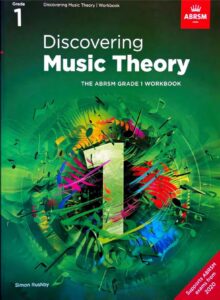 |
ABRSM Discovering Music Theory (Complete) Grades 1 to 5 Workbook by Simon Rushby (2020 Exams) contents |
| ABRSM Erster Verlust Grade 4 ABRSM Piano Exam Pieces 2021 & 2022 |
 |
|
| ABRSM Etude In A Minor – Dmitry Kabalevsky ABRSM Grade 4 Piano Exam Pieces 2021 & 2022 |
 |
|
| ABRSM Grade 2 – Inter-City Stomp byChristopher Norton From Microjazz Collection (Sheet Music) |
 |
|
| ABRSM Initial Grade Piano Exam Pieces 2023 2024 |
 |
|
| ABRSM Minuet and Trio D 41 No 21 – Franz Schubert ABRSM Grade 4 Piano Exam Pieces 2021 & 2022 |
 |
|
| ABRSM More Music Theory Sample Papers Grade 5 For New Format |
 |
|
| ABRSM Music Theory In Practice, Grade 1 (Eric Taylor) |
 |
|
| ABRSM Music Theory In Practice, Grade 2 (Eric Taylor) |
 |
|
| ABRSM Music Theory Past Papers Grade 1 2004 |
 |
|
| ABRSM Music Theory Past Papers Grade 4 2016 |
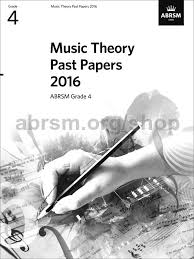 |
|
| ABRSM Music Theory Past Papers Grade 5 2012 |
 |
|
| ABRSM Music Theory Past Papers Grade 6 2013 |
 |
|
| ABRSM Nikki Iles Danny Boy ABRSM Piano Exam Grade 8 2023 Jazz Piano arr. inspired by Bill Evans |
 |
|
| ABRSM Nikki Iles Friends Book 1 Intermediate Jazz Pieces For Piano |
 |
ABRSM Nikki Iles Friends Book 1 Intermediate Jazz Pieces For Piano |
| ABRSM Nikki Iles Friends Book 2 Intermediate To Advanced Jazz Pieces For Piano |
 |
ABRSM Nikki Iles Friends Book 2 Intermediate To Advanced Jazz Pieces For Piano |
| ABRSM Nikki Iles The Elephant Parade ABRSM piano Exam |
 |
|
| ABRSM Piano 2025-2026 Grade 8 C3 A Nightingale Sang in Berkeley Square by Sherwin – Maschwitz |
 |
|
| ABRSM Piano Exam 2007-2008 Grade 3 |
 |
|
| ABRSM Piano Exam 2015-16 Grade 3 |
 |
ABRSM Piano Exam 2015-16 Grade 3 |
If you want to learn how to play bass guitar (or find a good bass model for beginners), Paul McCartney is an essential player to learn from.
No matter which styles of bass guitar you like to play, Paul’s career will offer something for you — he’s dabbled in a lot of different styles, which makes him one of the most revered and versatile bass players ever to pick up the instrument.
This guide discusses everything that you need to know in order to play like Paul McCartney.
We’ll discuss the specifics of his technique, as well as many of the general ideas to keep in mind if you want to play like Paul McCartney. These ideas include broad areas to focus on, as well as more specific points to help improve your playing style and help you find your sound.
Finally, we’ll touch on some of the gear that you might want to buy in order to emulate Paul McCartney’s tone.
A lot of the items that McCartney has used throughout his music career have been very expensive. The large amounts of gear that he’s used also makes it difficult to emulate ihm exactly. Oftentimes, McCartney would adopt one or two main basses for his time with one group, and then move on when those groups broke up or petered out.
However, when those expensive cases come up, we’ll provide affordable alternatives and explain what makes them the best choice for players on a tighter budget. Paul’s lasting influence on the bass guitar world means that most.
Playing Style: Goals
If you’re setting out to emulate a particular musician when they do something, it’s absolutely essential to keep their goals and contexts in mind. Simply put, if you’re not playing towards the same goals as the musicians that you want to sound like, you’ll find it very difficult to emulate them successfully.
Without reflecting on the long-term creative goals of your favorite players and how they achieved those in their playing, it will be difficult to provide any decent approximation of their sound. You won’t be thinking about the parts in the same way, and won’t frame them within the right context to serve the song and the creative vision accurately.
With that warning in mind, here are some of Paul McCartney’s goals when he plays bass guitar. I’ve collected many of these goals just from observing his playing style and the music he makes. I’ve also come to recognize how his playing style changes as his big-picture goals shift.
With the Beatles
On a lot of the Beatles’ records, Paul felt moved to write rhythmic parts to anchor a groove behind a band over top. This was particularly noteworthy during the band’s first few records, which prioritized faster tempos and quick, danceable grooves. Paul needed to establish a consistent, tight bassline in order to lock in with Ringo Starr on the drums.
As the band began to mature, McCartney’s goals changed a bit. Rather than hitting a pulse on every beat, he began to focus on using the bass to create proper melodies. Instead of backing up the rhythm guitar or just playing the root note of every chord, these bass lines were unique, melodic, and much more articulate.
Of course, Paul could still deliver a pounding, groovy bassline — just check out his work on White Album tracks like “Helter Skelter” or “Yer Blues”! But instead of focusing exclusively on these styles, McCartney was able to expand his range and palette significantly.
Wings & Solo Artist
As a solo artist after the breakup of the Beatles, McCartney began to blend some of these techniques to create a new style on the bass. A lot of tracks, like “Hi Hi Hi,” focused on driving the beat forward with a chugging bassline, just like he did in the early days of the Beatles.
However, he also had a lot of softer, suave basslines, like on his album Band on the Run. Te mixes of these different styles continued the work he had done in the Beatles’ later years, and brought some trends back forward from the early work of the group.
This synthesis of different styles yielded a lot of great work, although it’s also been a bit more inconsistent than a lot of his work in the Beatles. Obviously, having the songwriting geniuses of John Lennon (who was also a great rhythm guitarist) and George Harrison to work with couldn’t have hurt!
Overall, though, all different pieces of McCartney’s career have a lot of valuable techniques which you can learn from to play bass like him.
With that in mind, let’s get into the specific techniques McCartney uses, so you can learn how to play like him! Then, we’ll break down his favorite pieces of gear.
Bass Guitar Techniques
Any bassist with a career as long as McCartney’s will use a ton of different techniques. That makes it difficult, if not impossible, to cover all of them in one short article. However, if you want to get a quick estimation of McCartney’s talents and playing style, these techniques are some of his favorites. Learning how to use these skills will help you sound and feel like Paul on the bass.
Playing With a Pick
Playing with a pick is a pretty divisive technique in the bass community — some bassists love the sound and feel that it affords them, while other maintain that picks are for guitars only — and that bassists who play with one should learn how to play with their fingers instead.
Of course, these debates are often a bit silly. There’s no such thing as a “right” or “wrong” sound on the instrument, and even what makes a given bass tone sound “good” is highly subjective. However, if you want to play like Paul McCartney, playing with a pick is absolutely essential.
Paul played with a pick from his earliest days on the instrument, and continued this habit all throughout his career. It’s rare to find a Beatles where he plays with his fingers instead. Using a pick has a number of tonal advantages, particularly with the violin-style basses that Paul liked to use. We’ll focus on the violin basses in more depth later, but for now let’s talk about picking.
Playing bass with a pick increases your attack on the instrument — this means that the note is sharper, more precise, and more “in your face.” If you listen to clips of bassists comparing fingerstyle playing to playing with a pick (like the video that we’ve featured above), you’ll see the difference in attack.
Like the attack, you can play with a pick to get more presence out of your bass. The exact meaning of the term “presence” is a bit nebulous to some, but it generally signifies a better response in the midrange and upper registers of the bass.
Listeners often perceive a bass tone with a lot of presence as sharper, or more distinct. Notes don’t blend together as much, and it’s easier to hear dynamics, rhythm, and phrasing. That top boost is also handy, particularly when playing with hollow-body basses. Semi- and fully hollow basses add a round, warm acoustic tone to your bass. Playing with a pick balances it out.
If you’re looking for examples where McCartney’s pick playing made a difference in his tone, all you need to do is check out some Beatles records. It’s a consistent presence throughout, but you will hear it more easily on some songs than on others.
“I Saw Her Standing There,” from the band’s first album Please Please Me, is a good example to listen to. Notice how bouncy and crisp each note is on the bass. The attack and cutting tone of Paul’s pick makes the bassline go, and drives the song forward by extension.
From the Beatles’ later work, “Come Together” is another easy option to hear the way that playing with a pick changes your tone. This song is the opening track on Abbey Road, and its bassline is one of the most famous of all time. Once again, you can hear how the pick keeps every note in the riff clear and defined. It provides better phrasing and a clearer sound overall.
Blues Vocabulary
While there were certainly mechanical aspects that influenced Paul’s playing style and sound, most of his crucial techniques had to do with how he actually played the notes. In that regard, one of his first and most prominent influences was the blues.
Blues permeated the early rock and roll records that he listened to before the Beatles were founded, and that style of music provided the band’s main inspiration for the first half of their career. If you want to find a great blues guitar on a budget, check out our comprehensive guide to the best cheap blues guitars.
Paul incorporated a lot of the language of early rock and roll and used it in his playing. All you need to do is listen to the chord progressions and rhythmic, driving basslines of albums like With the Beatles and A Hard Days’ Night to understand the role that blues music served in Paul’s style on the bass.
This is particularly prominent on the Beatles’ cover songs. They often covered blues songs outright, like Chuck Berry’s “Roll Over Beethoven” or Berry Gordy’s “Money (That’s What I Want).” These songs provided a forum for McCartney to demonstrate his skill at playing blues bass, and incorporate that influence into his playing on other songs as well.
Becoming fluent in blues guitar playing takes a bit of effort. There are a lot of different aspects you’ll need to know, like how to play over a 12 bar blues sequence and how to play blues turnarounds. You might also want to learn some basic blues improvisation, because these techniques will help you play bass like Paul McCartney.
Uses for Blues
Paul used these techniques for a few main reasons. First, the blues emphasize stock, repetitive chord progressions that make it easy to drive a song forward. Rather than focusing on the root of every chord and just playing one note in each chord, 12 bar blues songs allow plenty of time for bassists to establish a rhythm through driving, repetitive playing.
The rhythm of the blues also translates to a lot of other styles of early rock and roll. Lots of blues and rockabilly songs, particularly those released in the 1950s, emphasize syncopation and swing. These aspects are important to know, because Paul often incorporated swing feeling into his bass playing.
If you learn how to play blues, your time feel and rhythmic skills will improve, which will in turn allow you to play more consistent swung basslines and sound like Sir Paul. Combine that with the hard-charging rhythms of lots of blues standards, and you’ll be sounding like the basslines from the early Beatles in no time!
Early Beatles: Simple, Basic Chord Tones
Learning the chord tones of a given chord is crucial to play bass like Paul McCartney. That’s because a lot of his early work with the Beatles focused very heavily on the chord tones of a particular song. The chord tones of a given chord are the notes that give the chord its distinctive flavor. They’re usually identified as the root, third, fifth, and sometimes the seventh as well.
Using these chord tones in a song is a great “shorthand” way to communicate which chord the band is playing at any moment. Hearing a chord tone in the bass register immediately frames the rest of the sound around that chord — even if the guitarists play less conventional lines, having a chord tone in the bass will help listeners hear how it all fits together on one chord.
This means that he played the root, third, and fifth of each chord a lot, without a ton of chromativ emphasis on the other notes in the scale.
Later Beatles: Chromaticism
If you listen to albums like Sergeant Pepper’s, Abbey Road, or even Revolver, you’ll notice a stark contrast with the band’s first five or six albums. There are a lot of reasons for that break in the sound — the band stopped touring, and the changing culture of the 1960s provided a fertile ground for more exploration in both sound and lyrics.
However, one of the key factors in the ultimate sound of this transition was Paul McCartney’s growing use of chromaticism. This marked a big shift from the blues-based vocabulary of the band’s earliest albums, and ended up influencing the pace, tone, and rhythm of the Beatles’ last five albums.
In contrast to blues rhythms, which prioritize repetitive playing and faster, swung rhythms, a lot of Paul’s chromatic basslines were more nuanced and incorporated a bit less emphasis on pace. The main impact of this was that the band centered the bass in their songs more than they did at the beginning.
Rather than keeping the bass in the back of the mix, McCartney’s bass riffs began to provide a more complex, dissonant sound that merged well with the other instruments as a prominent factor in the mix.
This marked a big shift away from the bass as a rhythm-keeping instrument. While Paul could still lay down tracks to reinforce Ringo Starr’s drumming, more often the chromatic emphasis gave him the freedom to riff and “solo” on his own. As we’ll discuss a bit more in the next section, this continued to center the bass and raise Paul’s role in the band’s musical process.
For some good examples of chromatic basslines from Paul in the Beatles, check out the riffs he laid down on tracks like “Oh! Darling” and “Something.” These two songs are both off of Abbey Road, the album where Paul provided some of his most melodic playing ever.
Notice how the bassline in each song snakes comfortably through the changes, without as much “driving rhythm” or pulsing repetition as in a lot of the Beatles’ earlier songs. This marks a big change from driving the groove forward to sitting back in the pocket, and taking more of a role in the melody of the song rather than just the beat underneath it.
It’s also good to notice how the bass interacts with the other instruments on these songs. While the lines accent the guitars over top of them, they’re not just “part of the rhythm section” — the riffs Paul is playing are just as present in the mix as the guitars and singing. It’s that focus on melodies and catchy riffs which showcases his chromatic playing.
Using Chromaticism in Your Playing
Incorporating chromatic influences in your playing might seem difficult, particularly if you’re only used to playing within scales like the pentatonic scale or arpeggios. These patterns jump around a lot, making larger leaps between notes and leading to a “spacier,” less chromatic sound.
The modal scales are a good way to start playing chromatically. You’ll need to learn how to use the mixolydian mode, the lydian mode, the phrygian mode, the dorian mode, the harmonic minor, the locrian mode, and far more. Our comprehensive guitar music theory guide is a great walkthrough.
However, at its root chromaticism is very simple: it’s just learning how to play notes next to each other in a given scale, and working between those notes to build interesting riffs and hooks. If you’re skilled at playing chromatically, you open up a lot more options for yourself than playing in the pentatonic scale.
That’s because chromatic scales offer a lot more notes for you to use than pentatonic scales and other similar forms. By weaving these together effectively, you increase the possible options for different lines to create. Add in the varied use of rhythm, and chromatic playing is a great way to spice up the way that you play scales and patterns already on the bass.
For a newer player, it might be helpful to begin by incorporating chromatic influences into scales and patterns that you already know. Try transcribing some of the melodies from Paul’s basslines, and see how he often moves between just one or two notes in the scale at a time.
Then, you can emulate these basslines by moving around one note at a time, and trying to string together smooth, melodic sections of notes. Pay attention to your phrasing and articulation, to make sure that you don’t sound sloppy, or play too slowly. Ultimately, applying this melodic instinct to chromatic structures will get you close to sounding like Paul McCartney.

Gear
Of course, if you want to get Paul’s tone on the bass, you’ll need to use some his gear! Sir Paul’s legendary Hofner bass is one of the most famous symbols of his career — in fact, he’s done more than any other artist to raise the profile of that model — but throughout his career he’s used more than just the one instrument.
To get all of the sounds that Paul uses, you might need to check out a bass, amps, and even pedals as well. We’ve provided a mix of gear designed to copy Paul’s choices as closely as possible, and make these sounds accessible to players on every budget. Read ahead to find out!
Hofner Violin Bass
As we mentioned above, the Hofner violin bass is far and away Paul McCartney’s most famous piece of equipment. He purchased this axe when the Beatles were playing residencies in Hamburg, mostly because of its symmetrical shape (which he thought looked better for him as a left-handed player).
However, in the years since he first bought that bass, it’s become famous for far more than just its looks. The Hofner violin bass provides a unique warm, woody tone thanks to its hollow body. Among professional bass players and hobbyists alike, the violin bass is popular as a tonally unique instrument — it’s a great “change of pace” axe that can put a unique stamp on a song.
It’s also got a number of ergonomic advantages, as well. Its small frame and short scale length make it a great choice for bassists who want a lighter instrument that’s easier to handle and comfortable to play for long hours at a time. If you play lots of gigs, the difference in weight might be particularly noticeable — over time, a few pounds can add up to a lot of back stress!
The short scale combines with the hollow body to produce a completely unique sound. Short scale basses tend to emphasize the fundamental of any given note, with fewer harmonics and overtones in the sound. This makes them sound “punchier” and more “up front” to many listeners, and helps them sit well in a mix, both in the studio and on stage.
The hollow body of this instrument balances out that punchier attack, by rounding out the edges of the sound and offering woody, resonant response. When played with a pick, it’s a stunning combination of sounds. Paul uses this combination to great effect throughout his career with the Beatles and later as a solo artist.
Rickenbacker Bass (4001/4003)
While he was in the Beatles, Paul also began to experiment with basses beyond the Hofner violin. The Rickenbacker 4003 was a product of this experimentation — Paul received one from the company in 1965, and soon began to use it as his favorite bass on many other songs.
It’s all over Sgt. Pepper’s, and he also enjoyed using the Rickenbacker through parts of Revolver and the White Album. In contrast to the Hofner, the Rickenbacker’s solid body and crisp, clear single-coil pickups provide a tone that’s hard to beat — and very difficult to replicate.
Rickenbacker basses are known for accentuating the top end of their signal range, as well as the high mids and overall clarity. Some players hate this sound design, but many more like to use it in order to add a different weapon to their bass arsenal. And as far as off-color basses go, it’s hard to beat the pedigree and reliability of a Rickenbacker!
Unfortunately, Rickenbacker has no budget models or affordable alternative line. If you want to get Paul’s Rickenbacker tone without spending thousands of dollars, you’ll need to look for an alternative.
The Peavey T40 is a good vintage bass that can mimic the sounds of a Rickenbacker pretty well — while it’s out of production now, you can find them on Reverb, EBay, and Craigslist for affordable prices. They’re some of the most versatile basses ever made, as they can sound like Rickenbacker basses, P-Basses, J-Basses, and even Gibson bass sounds as well!
Of course, you may not be able to find any T40 models at an affordable price near you. The company’s Peavey Milestone bass is another option, or if you want a more consistently available alternative, a Fender or Squier Jazz Bass or Jaguar Bass should do the trick.
These guitars use two single-coil pickups, like Rickenbacker basses. They’re voiced a bit differently than Rickenbacker pickups — but with a bit of experimenting and maybe an EQ pedal handy, you should be able to imitate the sound of a Rickenbacker pretty convincingly with one of these instruments.
Amps & Accessories
Like his basses, Paul has used a wide variety of amps throughout his career; he’s not picky and works with whatever amps are available. However, during his time with the Beatles he was fond of two main types of bass amps: Vox amps (like their AC4 guitar amp) and Fender bass heads.
Vox amps tend to emphasize the midrange and trebles more (a “British” voicing), with plenty of saturation at higher levels of gain and more “chime,” “jangle,” and “sparkle.” American amps retain some of that brightness, but are voiced to be a bit warmer and smoother than their British counterparts.
If you’re on a budget, any bass amp from either of these companies will work well. The Vox Mini SuperBeetle is a Beatles-inspired mini amp, and Vox’s bass version is just as good as the guitar models. These amps are built with Vox’s “NuTube” technology, which uses tubes along with solid-state tech for a boutique sound at a bargain price.
The Mini SuperBeetle Bass does a great job of giving you classic Vox bass tones, without breaking the bank. It doesn’t have a lot of extra features or frills in the control set, but at this price it’s hard to hold that against the team at Vox. Also, it looks absolutely fantastic! It’s an amp that you might want to plug in at your living room and just show it off, without even playing it!
As far as Fender amps go, a blackface or silverface Fender will work best. Whether you get a vintage model or a modern reissue, these amps are built to imitate the sounds that McCartney got out of his bass amps as precisely as possible.
If you don’t have a lot of money to spend, check out one of the amps from Fender’s Rumble series. These amplifiers are affordable, but sound very good for their price. Because they’re so cheap, it also makes them perfect for new and young players. They’re a great way to save money without compromising on tone and sound.
Conclusion
Sir Paul McCartney is one of the most revered bass players of all time. It can be difficult to play like him, for obvious reasons: his songwriting genius, his multiple stylistic changes throughout his career, and his unique gigging experience, to name a few. However, there are certainly a few key concepts that you can take away from his playing.
Studying these concepts and techniques will help you improve on the bass, and sound more like Paul McCartney as you do it. Make sure to check out some of his gear as well, in order to get the perfect sound from records like Abbey Road to Band on the Run. Happy playing!

